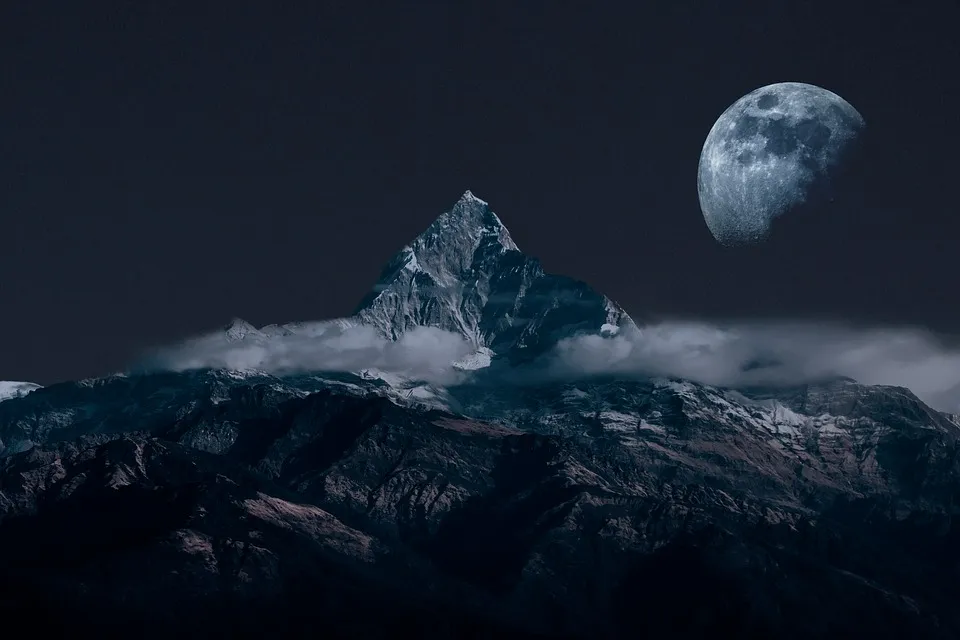There used to be more sacred places on the earth, holy sites worthy of pilgrimage. They would be places where the gods once roamed, or where powerful rivers converged. Or where the icy glaciers melted at the foothills of the highest mountains.

Indeed some talk of places today where ley lines converge and power points emerge. But today's earth is not that of millennia past because today the degraded mood of the mass of society is so contaminated that even the once powerful places of pilgrimage have become overrun by impostors and charlatans. The holy places have become covered.
So where does the aspiring yogi turn when they wish to retreat to a place that will uplift their consciousness and allow them to reach new heights of insight? Some still go to the Himalayas or other such places where the air is clear and the water purest. A few last places may still exist worthy of pilgrimage, where the aspirant will remain undisturbed by the ripples in the ether arising from the mass of civilization and their activities on the planet.
It is there where yogis have gone for sanctuary over the centuries and where one may still go for shelter and peace in which to meditate. The ancient texts reveal the details of how such meditation should occur for best results, so those who are inspired will find the manual and technique required.
But are you able to perform the practices in solitude for the length of time needed to master the techniques? It may be challenging at this point in history, so there are easier ways, namely the process of dancing and chanting, also known as mantra meditation. All of us love to congregate and sing and dance together, and so that is the practice for the aspiring yogi in this day and age.
It's simple and sublime. Music is the fluid, the lubricant which facilitates our transcendence today. Use it and find yourself walking on sunshine, where every word is s a song and every step is a dance. And it's easier in a group, compared to the practice of retreat to the mountains and forests in solitude. That is the last resort, only if you run out of people to dance with.
Bhagavad Gita ch6:11-12
शुचौ देशे प्रतिष्ठाप्य स्थिरमासनमात्मन: ।
नात्युच्छ्रितं नातिनीचं चैलाजिनकुशोत्तरम् ॥ ११ ॥
तत्रैकाग्रं मन: कृत्वा यतचित्तेन्द्रियक्रिय ।
उपविश्यासने युञ्ज्याद्योगमात्मविशुद्धये ॥ १२ ॥
śucau deśe pratiṣṭhāpya
sthiram āsanam ātmanaḥ
nāty-ucchritaṁ nāti-nīcaṁ
cailājina-kuśottaram
tatraikāgraṁ manaḥ kṛtvā
yata-cittendriya-kriyaḥ
upaviśyāsane yuñjyād
yogam ātma-viśuddhaye
SYNONYMS
śucau—in sanctified; deśe—in the land; pratiṣṭhāpya—placing; sthiram—firm; āsanam—seat; ātmanaḥ—self-dependant; na—not; ati—too; ucchritam—high; na—nor; ati—too; nīcam—low; caila-ajna—soft cloth and deerskin; kuśottaram-kuśa grass; tatra—thereupon; ekāgram—one attention; manaḥ—mind; kṛtvā—doing so; yata-citta—controlling the mind; indriya—senses; kriyaḥ—activities; upaviśya—sitting on; āsane—on the seat; yuñjyāt—execute; yogam—yoga practice; ātma—heart; viśuddhaye—for clarifying.
TRANSLATION
To practice yoga, one should go to a secluded place and should lay kuśa-grass on the ground and then cover it with a deerskin and a soft cloth. The seat should neither be too high nor too low and should be situated in a sacred place. The yogī should then sit on it very firmly and should practice yoga by controlling the mind and the senses, purifying the heart and fixing the mind on one point.
PURPORT
"Sacred place" refers to places of pilgrimage. In India the yogīs, the transcendentalists or the devotees all leave home and reside in sacred places such as Prayāg, Mathurā, Vṛndāvana, Hṛṣīkeśa, and Hardwar and in solitude practice yoga where the sacred rivers like the Yamunā and the Ganges flow. But often this is not possible, especially for Westerners. The so-called yoga societies in big cities may be successful in earning material benefit, but they are not at all suitable for the actual practice of yoga. One who is not self-controlled and whose mind is not undisturbed cannot practice meditation. Therefore, in the Bṛhan-Nāradīya Purāṇa it is said that in the Kali-yuga (the present yuga or age) when people in general are short-lived, slow in spiritual realization and always disturbed by various anxieties, the best means of spiritual realization is chanting the holy name of the Lord.
harer nāma harer nāma harer nāmaiva kevalam
kalau nāsty eva nāsty eva nāsty eva gatir anyathā.
"In this age of quarrel and hypocrisy the only means of deliverance is chanting the holy name of the Lord. There is no other way. There is no other way. There is no other way."
Reference: Bhagavad Gita As It Is, translation and commentary by Swami A C Bhaktivedanta, original Macmillan 1972 edition.
Image: https://pixabay.com/photos/mountain-night-landscape-fog-moon-9428952/